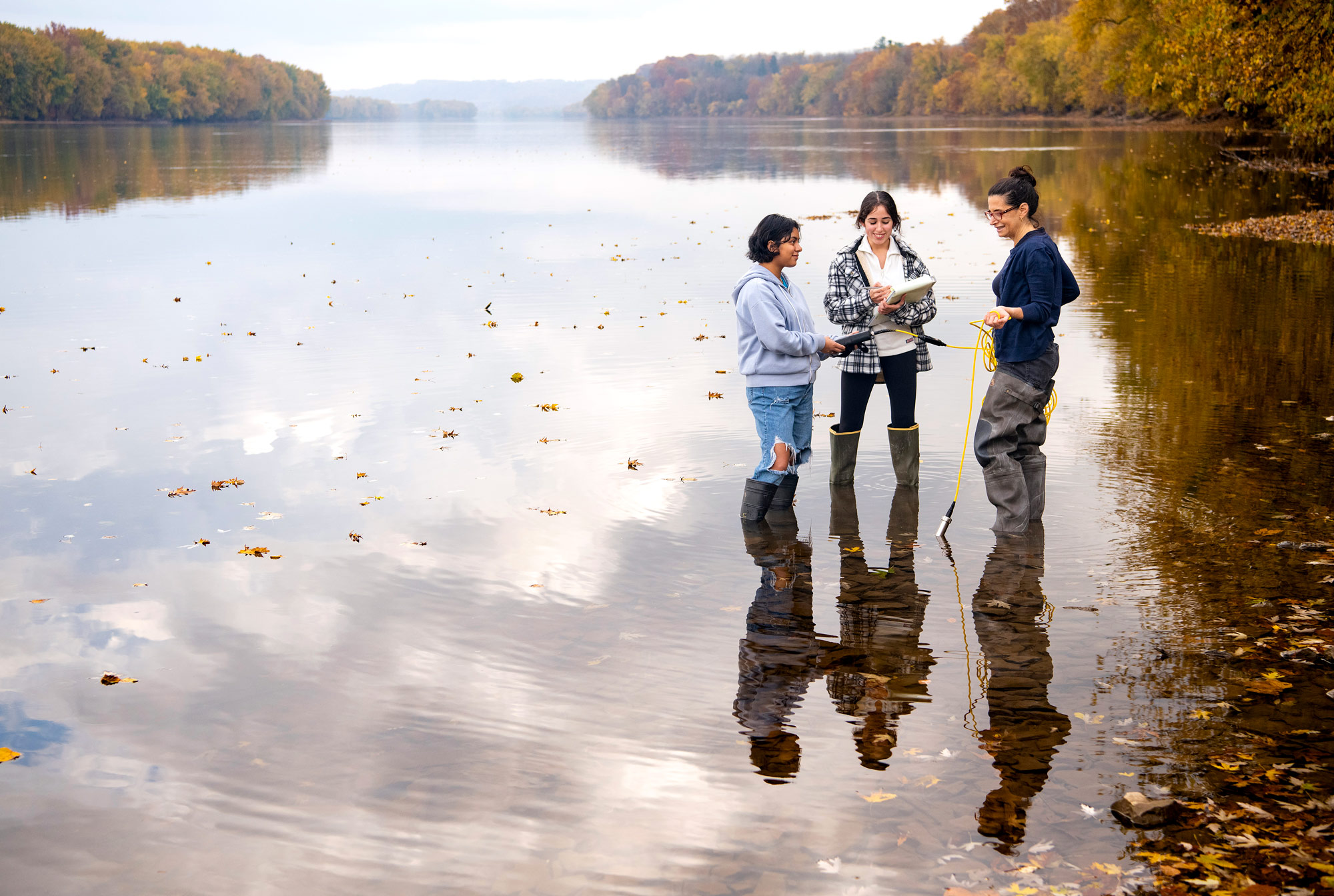
From left: Demi Gonzalez ’26, Melanie Gamboa ’24 and Professor Deborah Sills, civil & environmental engineering, test water in the Susquehanna River.
Engineering the Future — for Good
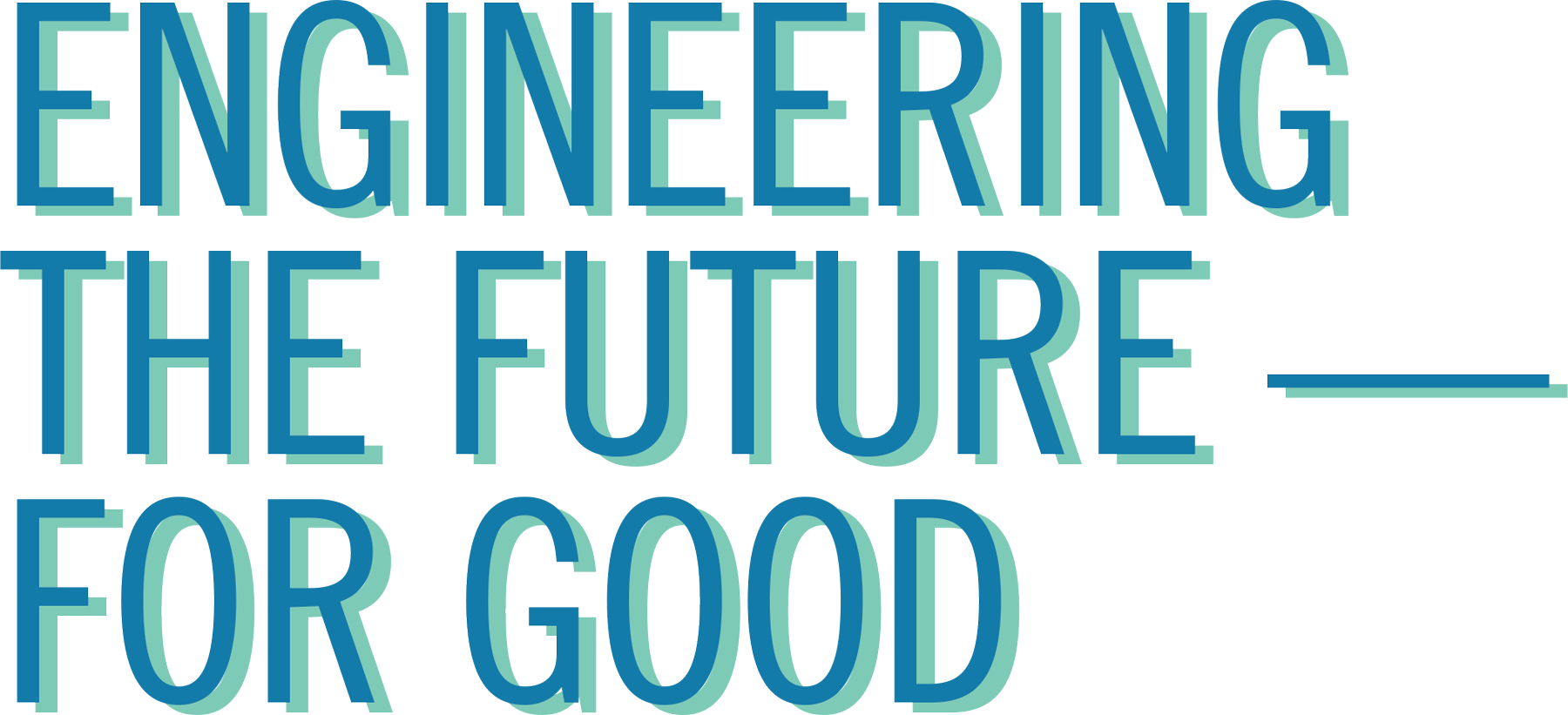
photos by emily paine
From left: Demi Gonzalez ’26, Melanie Gamboa ’24 and Professor Deborah Sills, civil & environmental engineering, test water in the Susquehanna River.

Katherine Owens Hayden P’48 was one of the trailblazers of this era. In 1923, she became the first woman to earn an engineering degree from Bucknell University. Though Bucknell had been co-educational since 1852 — notably just six years after its chartering — engineering was the last domain on campus for women to access.
“The 100th anniversary of Hayden’s graduation is significant,” says Erin Jablonski, associate dean of engineering. “Other schools have recently celebrated 50 years of women in engineering, which coincides with Title IX. That means they had to accept women. Bucknell was progressive, and we should celebrate and be proud of that.”
Hayden may have been a new student, but she wasn’t new to campus or a stranger to faculty. Her father, William Owens, Class of 1880, H’35, headed the chemistry department and helped create the chemical engineering program in which his daughter enrolled. But his connections didn’t earn her any favor. “I was the first gal in the course, and the boys all liked to play tricks on me. Even the professors liked to give me things that didn’t work,” she told Bucknell World in 1993. In fact, mechanical engineering professor Frank Burpee P’31, P’35 even refused to let Hayden into his mechanical drawing class.
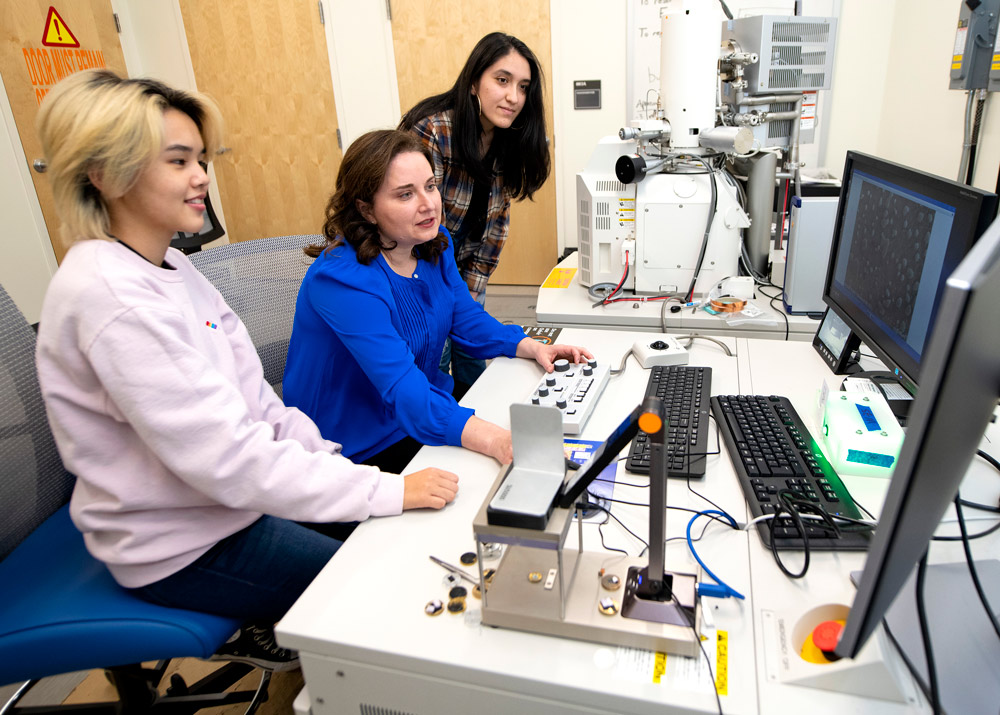
From left: Grace Lostak-Baker ’23, Professor Wendelin Wright, mechanical engineering, and Jazmin Ramirez ’23 examine images collected from a scanning electron microscope.
In the 100 years since Hayden’s graduation, thousands of women have followed in her footsteps. Today, women comprise 31% of Bucknell College of Engineering students, compared to just 24% nationally. Trailblazing alumnae conduct cutting-edge research and make life-changing discoveries while also creating opportunities for other women in the field (see “Claiming Their Place in Engineering,” P. 28). Many have broken barriers in traditionally male-dominated roles at companies like SpaceX, Google, Amazon, Johnson & Johnson and Merck.
For all their successes, however, women still remain underrepresented in engineering occupations. Though women account for a majority (53%) of all undergraduate and advanced degrees, 86% of science and engineering professionals in the U.S. are men, according to the National Science Foundation.
Bucknell’s faculty and administrators are taking intentional steps toward parity to consistently broaden the story of who is successful in engineering. To help all Bucknell engineers thrive, there is an understanding that the educational experience needs to go beyond acquiring knowledge and developing technical skills. Jablonski says students have the best outcomes when they have hands-on, meaningful learning opportunities within a welcoming, empowering environment, and that experience builds a foundation that carries them into successful, fulfilling careers.
Cultivating Community
“Being the first or only comes with a great deal of responsibility, which can sometimes be heavy to carry,” Norton says. “Expectations can be high; the community you represent is being judged by how you perform. It also means that you are the maker of the roadmap, not fully aware of what lies ahead, including the challenges that arise from being considered outside the conventional norm.”
When Norton arrived at Bucknell in 2018, she was grateful to be in the company of so many women faculty members. Women comprise 30% of the College of Engineering’s faculty, compared to 19% nationally. In addition, two of the six engineering department chairs are women: Professor Wendelin Wright in mechanical engineering and Professor Donna Ebenstein in biomedical engineering.
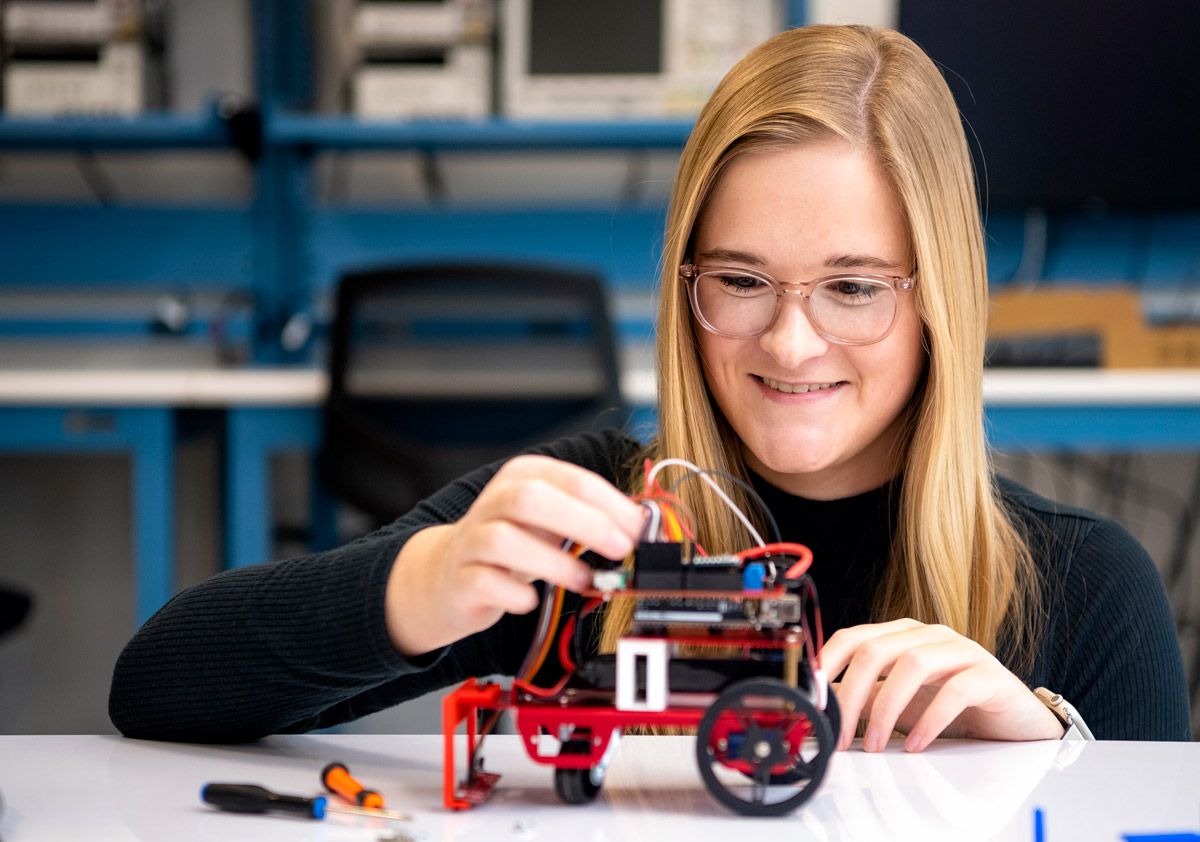
Mechanical engineering major Harper Malesardi ’24 builds a line-following robot in a Dana Engineering lab.
Such mentorship matters. It creates a culture of inclusion for women and has been shown to have a positive connection with success in engineering. A 2017 study conducted by researchers at the University of Massachusetts–Amherst found that women in engineering who had women mentors felt more confidence, less anxiety and a greater sense of belonging. They were also more likely to remain in the field.
Bucknell has several programs that provide students with support, mentorship and camaraderie — from the time they are admitted through graduation day.
The University’s chapter of the Society of Women Engineers (SWE), which was founded in 1979, rolls out the welcome mat for incoming students during Bucknell’s Admitted Students Day, hosting a dinner that gives newcomers the opportunity to meet current students and faculty members.
Aditi Vijayvergia ’21, M’23 says the opportunity to meet professors while still in high school influenced her to attend Bucknell. “Throughout all the interactions I had with faculty, I could see how eager they were to get to know each student; they were committed to helping them succeed.”
SWE also hosts social and professional events throughout the year, from study jams to interview workshops. The underlying theme is always fellowship. “We create a community that women engineers can turn to,” says mechanical engineering major Harper Malesardi ’24, co-president of Bucknell’s SWE chapter. “The experiences and connections I made with upperclassmen as a freshman in SWE made me want to become an officer so that I can continue working to provide those opportunities for others.”
Peer mentorship is also at the heart of the Garman Guides program, which pairs first-year engineers with older peers to build their sense of belonging and identity as Bucknell engineers.
Additional camaraderie among women is fostered through the college’s many engineering clubs, such as the Biomedical Engineering Society and Bucknell’s chapter of the Association for Computing Machinery-Women (ACM-W). ACM-W has sent Bucknellians to the Grace Hopper Celebration of Women in Computing and the Richard Tapia Celebration of Diversity in Computing Conference, both of which are premier events that provide immersive learning and networking experiences.
“Our active student organizations like SWE and ACM-W do a great job of supporting, celebrating and building community among the women in our college,” says Lea Wittie, associate professor of computer science and computer science associate department chair. “The unique opportunities and intentional connections help to create a welcoming atmosphere for our students to learn, live and reach their potential.”
Engineering in Action
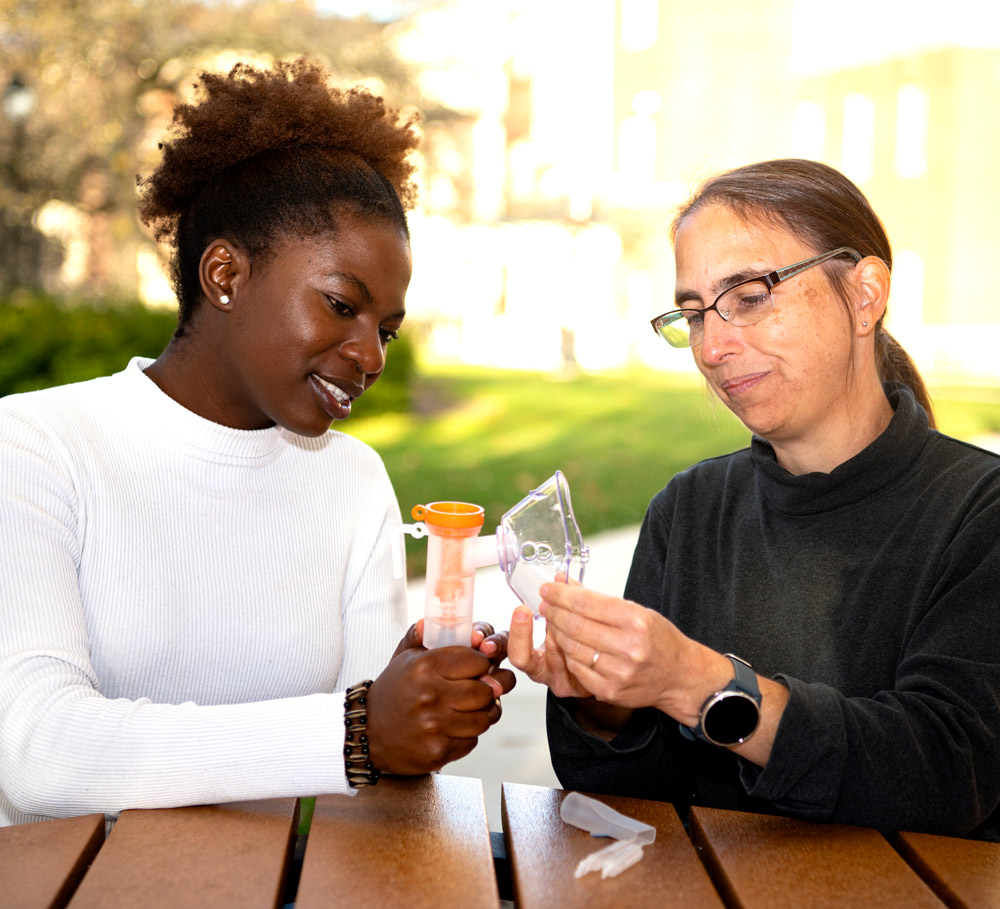
Simbi Maphosa ’23 created a portable asthma drug-delivery device under the guidance of Professor Donna Ebenstein, biomedical engineering.
Finding Purpose
Ebenstein, chair of the biomedical engineering department, sees this in her students. “Medicine and biomedical engineering seem to be spaces where the impact of one’s work on other people is evident.”
That resonates with biomedical engineer Simbi Maphosa ’23. Inspired by her grandmother’s struggles with asthma, the Zimbabwe native developed a portable asthma drug-delivery device that helps patients with limited access to electricity and health care facilities. “This research project was unique in that it was totally Simbi’s idea,” says Ebenstein, who is Maphosa’s research mentor.
It’s the perfect example of what can happen when altruism drives innovation.
“I grew up with the mindset that an engineering education would teach me everything, and by becoming an engineer, I could do great things,” Norton says. “Today students arrive with an entrepreneurial mindset and ideas for how they want to make an impact on communities, society and humanity. They’re saying, ‘I know I am going to do great things,’ and they see engineering as the way to help them do it.”
Expanding Opportunity
Learning by Doing
“The vast literature about how social norms and media influence the way parents, teachers and classmates interact with boys and girls from a very young age manifests when students enter the lab and we see a woman pick up the pen and a man pick up the tool,” Jablonski says.
In these situations, Jablonski asks students to swap implements and their roles to ensure women aren’t solely focused on taking notes for the group while the men are “doing the engineering.”
She also has collaborated with her engineering colleagues to take a purposeful approach to advancing equity in the classroom.
“We intentionally make sure women’s voices are heard and that they have the same opportunity to gain hands-on experiences,” Jablonski says. “Every engineer who engages in a research or design project has to consider more than just the application of the technology or engineering solution they’re developing. There is always a societal context, an environmental impact and ethical considerations. Including diverse perspectives in the design of engineering solutions is critical.”
Research experiences also often connect students to lab groups, which can provide a sense of purpose and belonging.
Professor Dabrina Dutcher, chemistry and chemical engineering, vividly remembers struggling to feel confident in college until she started working in a lab her sophomore year. “I found my academic home,” she says. “I stopped struggling when I found the motivation for why I was studying what I was studying. It changed everything for me. It’s so important for me to offer that same experience to my students because I want them to feel like they have a home and a purpose.”
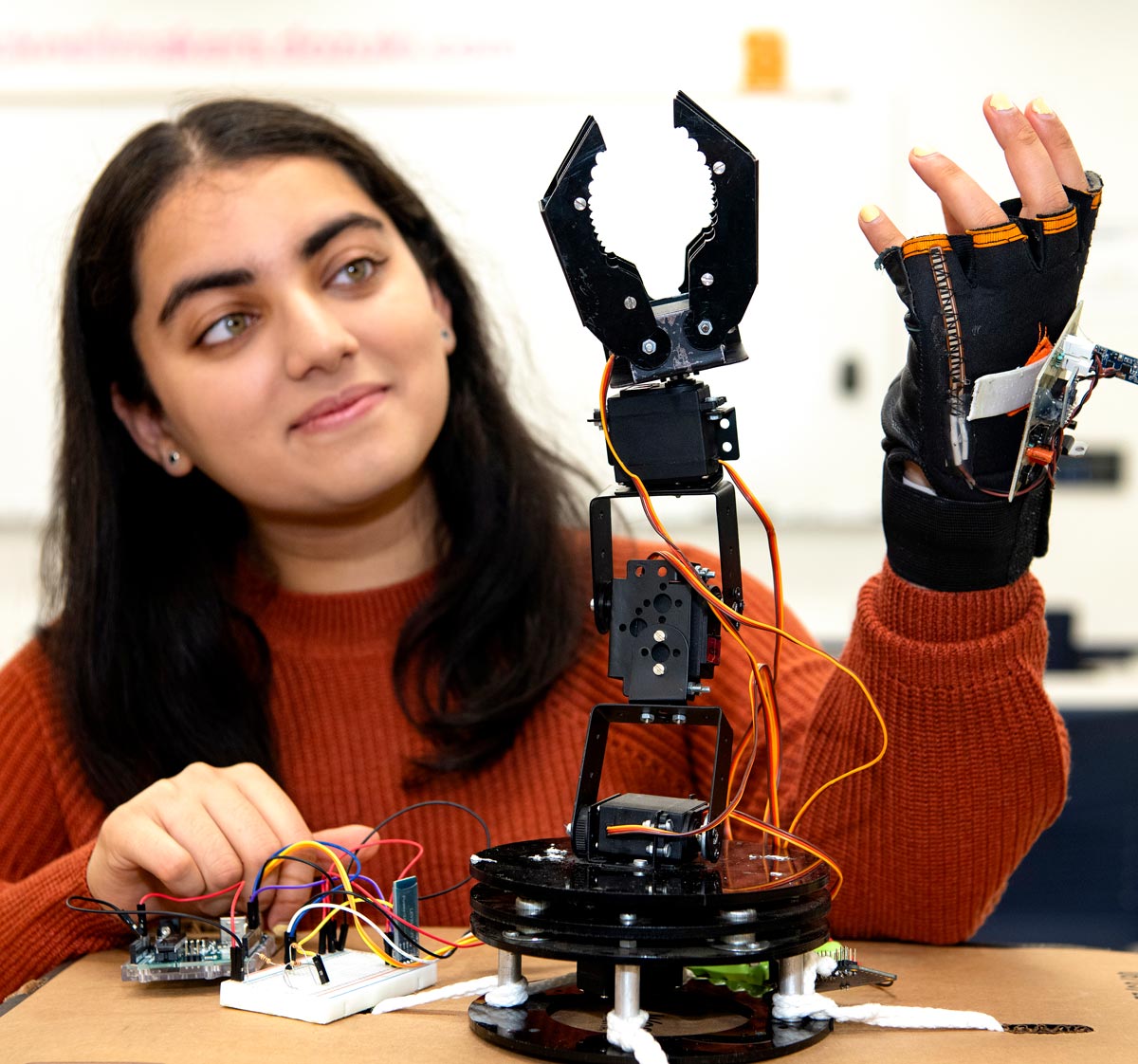
Aditi Vijayvergia ’21, M’23, electrical engineering, develops a robotic arm in the Maker-E makerspace in Dana Engineering.
In recent years, the Clare Boothe Luce (CBL) Research Scholars Program provided women studying engineering and physical sciences at Bucknell with a high-caliber summer research experience under a faculty member. Establishing CBL was a passion project for Professor Karen Castle, chemistry, and Mechanical Engineering Department Chair Wright. Both women had participated in a prestigious CBL program for faculty when they were assistant professors. “Once you’re in the program, you are always in the program,” Wright says. “It has been a great thing for my career.”
While the program is on pause until another funding source can be identified, its legacy remains. Of the 19 CBL Scholars who have already graduated from Bucknell, 12 of them (63%) are enrolled in graduate programs. “We still struggle to get women into engineering faculty ranks; to do that they need to go to graduate school,” Wright says. “Our explicit goal through the CBL program was to increase the number of women pursuing graduate degrees, and a much higher percentage of our scholars compared to the institutional average have done so.”
Planting a Seed
Engineering Camp brings middle- and high-school students to campus during the summer for a weeklong, hands-on introduction to the field. A survey of last year’s participants showed that 95% are as likely or more likely to study engineering, and felt the same about confidence in their ability to solve engineering problems.
Bucknell’s STEM Scholars program invites 10 talented incoming first-year students to participate in a five-week summer program, laying the foundation for their future research interests and relationship with faculty and peers. “The focus is on building early identity and self-efficacy,” Jablonski says. “It’s an excellent early introduction to being a STEM researcher.”
Engineering EXCELerator is a five-week summer program that kick-starts the classroom experience for first-year students, enabling them to use makerspace tools, develop engineering design skills and take introductory calculus and physics coursework to help them start their first semester feeling confident. In 2022, 18 incoming first-year engineers participated.
And in 2020, Norton spearheaded the launch of the Backstage Act II re-orientation program through the Engineering Success Alliance (ESA), which supports entering engineering students from under-resourced high schools. ESA provides targeted academic support, mentoring and professional development opportunities to help these students gain confidence, feel a sense of belonging and thrive.
In the 100 years since Hayden’s graduation, Bucknell’s College of Engineering has undergone a dramatic transformation. Today’s engineering students join a welcoming environment with encouraging mentors and programs that support their success. For all the progress that has been made, the evolutionary journey isn’t over. The college’s ongoing collective efforts to advance inclusion and representation will ensure its legacy of excellence for the next 100 years — and beyond.
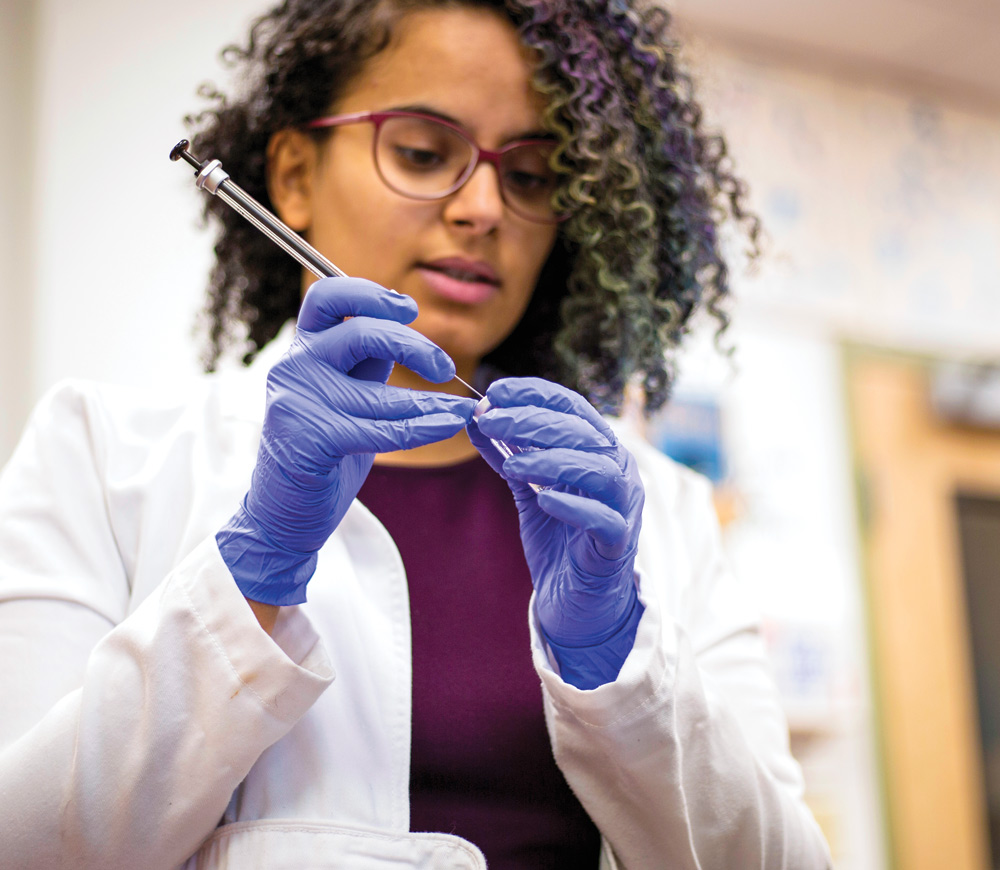
The work Mona Mohammed ’16, M’20 did in a Bucknell civil & environmental engineering lab prepared her for a position with the United Nations Environment Programme.
More Than a Mentor
As a student, Mohammed collaborated with Sills on wastewater treatment research. They explored how to provide wastewater treatment to places in the world where there isn’t reliable electricity, while also reducing the environmental impacts of the treatment process. Their investigation of a low-cost technology that can remove methane from anaerobically treated wastewater was published in Environmental Science: Water Research & Technology.
Mohammed says the research experience gave her a competitive advantage when applying for her position with the Life Cycle Initiative hosted at UNEP. And it provides a valuable foundation for the work she does to support the organization’s mission of ensuring that decisions by public and private stakeholders are science-based and account for positive and negative environmental, social and economic tradeoffs throughout the lifecycle (manufacturing, use and disposal) of goods and services.
Mohammed draws on lessons learned in Sills’ lab to conduct these environmental and social lifecycle assessments. She and Sills are still collaborating and expect to publish a second paper that will incorporate a social lifecycle assessment into their results.
Mohammed says she is grateful for the tangible skills she developed within Bucknell’s College of Engineering and for the special role Sills played in preparing her for success. “Engineering is a very difficult field, especially for BIPOC [Black, Indigenous and people of color], international individuals and women,” Mohammed says. “What really helps in this atmosphere is having both a mentor and an advocate. The difference between the two is that a mentor is someone who tells you what to do and how to navigate things. An advocate is someone who would go to bat for you in the places where decisions are being made. In my relationship with Deborah, I was lucky to find both.”
